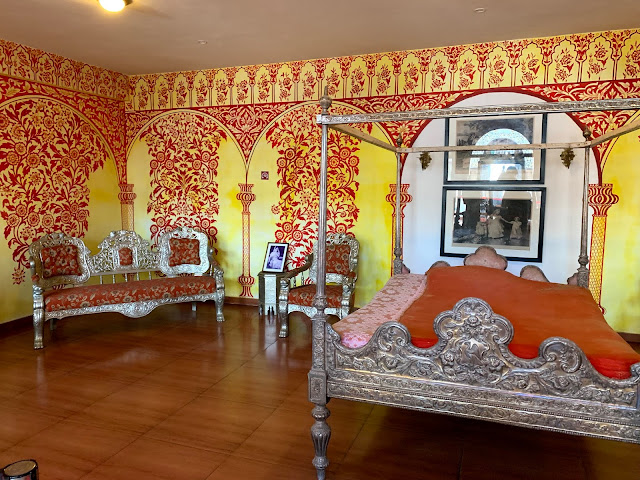Kangra Fort and 500 Generations of Katoch Rajas
Yesterday I took a taxi and guide to see some of the sights outside of Dharamshala. One of the places that we visited was Kangra Fort. This fort sprawls up and across the hills and has changed hands from Hindu. Muslim and British leaders over the centuries. A big earthquake in 1905 destroyed a lot of it but it was still impressive.
Kangra Fort was built by the royal Rajput family of Kangra State (the Katoch dynasty), which traces its origins to the ancient Trigarta Kingdom, mentioned in the Mahabharata epic. It is the largest fort in the Himalayas and probably the oldest dated fort in India-Wiki
I walked around the ruins for about an hour. Enjoying the great views from all sides.
One of the deities of the original fort temple was still intact.
After wandering around the fort, I visited the associated museum called Raja Sansar Chand Katoch Museum. The Katoch royal family traces its family tree back 500 generations.
This family tree with the names of 500 generations of rulers was impressive. The kings in their family fought against Lakshman in the Ramayana times, against Arjuna in the Mahabharata times and against Alexander the Great. I barely know my great grandparents names!
Most of the museum was filled with artifacts from the later period of the Katoch family rajas. Stories of real gold and jeweled wedding saris weighing double the weight of the bride were fascinating. Raja/Rajani wedding attire below.
Solid silver beds were the norm. The royal wives lived in purdah- meaning locked away in the palace seeing no one but other wives and consorts of the raja, female servants and their husband the Raja. There was a lot of palace intrigue (poisonings,etc) as the bored and powerless women strove to make their child the chosen heir. They rarely went outside the palace and if they did it was under heavy veils and carried on palanquins. This practice of purdah did not completely disappear until the 1930's.
Silver bedroom set of the Maharani of Katoch
Royal armor of Raja Samsar Chand Katoch. Last Raja to use the Kangra Fort.
More royal weapons (ho-hum not my cup of tea) LOL
After India became a democracy, the rajas throughout India ceded their power to the new government. Some members of the raja families entered government as public servants. One of the Ranis (queen) of the Katoch family was in the Indian Senate.
The Katoch family is still held in high regard in the area. Although the rajas were stripped of their power they are often still venerated by the current generation of "subjects". The museum curator was so proud to be associated with the Katoch family and showed me many photos of the current members of the "royal family."
The curator of the museum was very proud to be associated with the Katoch family.
One of the special things about Raja Sansar Chand is that he was a great patron of the arts and commissioned over 40,000 Kangra style paintings. Here is a sneak peek into my next post about Kandra style art.
Kangra painting-unique to this area of Himachal Pradesh-is famous for its tender and sweet depictions of Radha and Krishna and their blissful exploits described in the ancient Vedic texts. Here is one of my favorites-Radha and Krishna in a thunderstorm.














Comments
Post a Comment